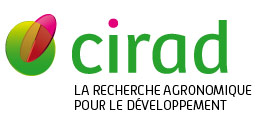Crop livestock integration in Vietnam: Boosting agricultural sustainability through innovation technical models and supportive local and national policies
Huyen L.T.T., Nguyen T.T., Trong Hieu D., Na D., Lienhard P., Blanchard M.. 2024. s.l. : s.n., 1 p.. Greater Mekong Subregion Agriculture Ministersã Meeting (AMM 2024). 3, 2024-11-19/2024-11-22, Kunming (Chine).
Crop-livestock integration is a major pathway towards a greener and more circular economy. This is particularly true in northwestern Vietnam mountainous areas, where livestock, notably large ruminants, and perennial crops are both seen as major pillars of local agricultural development strategies. Crop-livestock integration has been practiced by farmers for decades: farmers are collecting crops e.g. cassava roots, natural and planted grasses, and crops' residues e.g. paddy rice straws, to feed animals, while animal feces are collected and treated to fertilize crops. However, traditional crop-livestock schemes are under pressure in a context of animal roaming restrictions, and land rarefaction for animal feed production or collection. Silage feed that can be made from a diversity of forage material and stored for periods when feeds are less available or farmers busy with other activities. Compost is decomposed organic matter from various sources including animal feces and crops residues. As compared to untreated manure, compost helps removing bad smell, killing weeds' seeds and some disease germs, and reducing the weight of the final organic product. Forage-Silage-Compost integrated model is a good example of enhanced crop-livestock integration. It can contribute boosting agricultural and food systems sustainability, and supporting national and local national policies, notably those targeting circular economy enhancement, GHGs emissions reduction, and decreased environmental pollutions. But they are labor, technically and financially intensive so that the uptake of such technologies following sole training is usually low without external supports for initial investments such as choppers, double -layer silage bags, and Efficient Microorganisms (EM). Relatively low investments (ãincentive packã) can foster a rapid and strong adoption of Crop Livestock Integration with visits, training and awareness raising.
Documents associûˋs
Communication de congrû´s
Agents Cirad, auteurs de cette publication :
- Blanchard Melanie — Es / UMR SELMET
- Lienhard Pascal — Persyst / UPR AIDA
